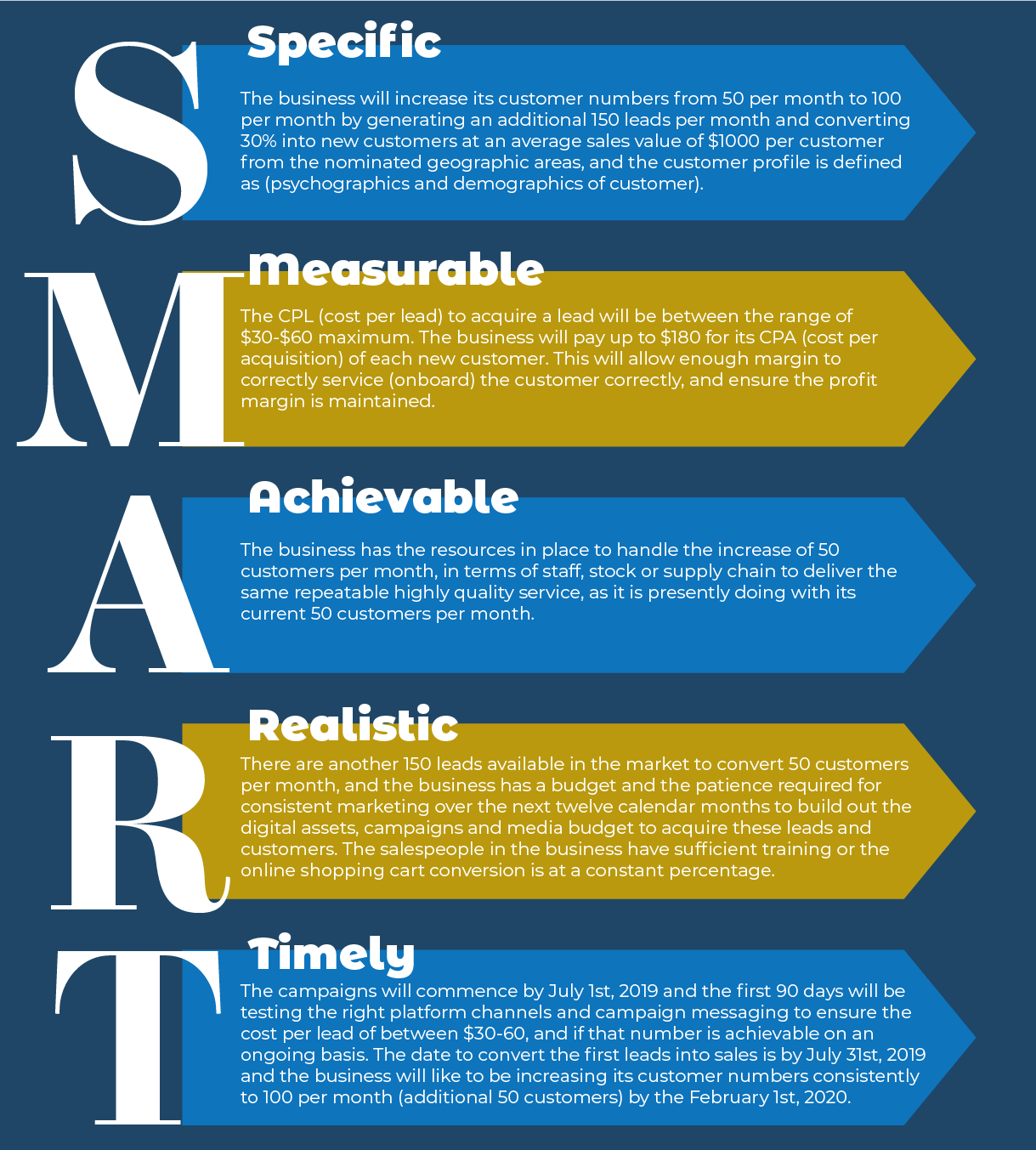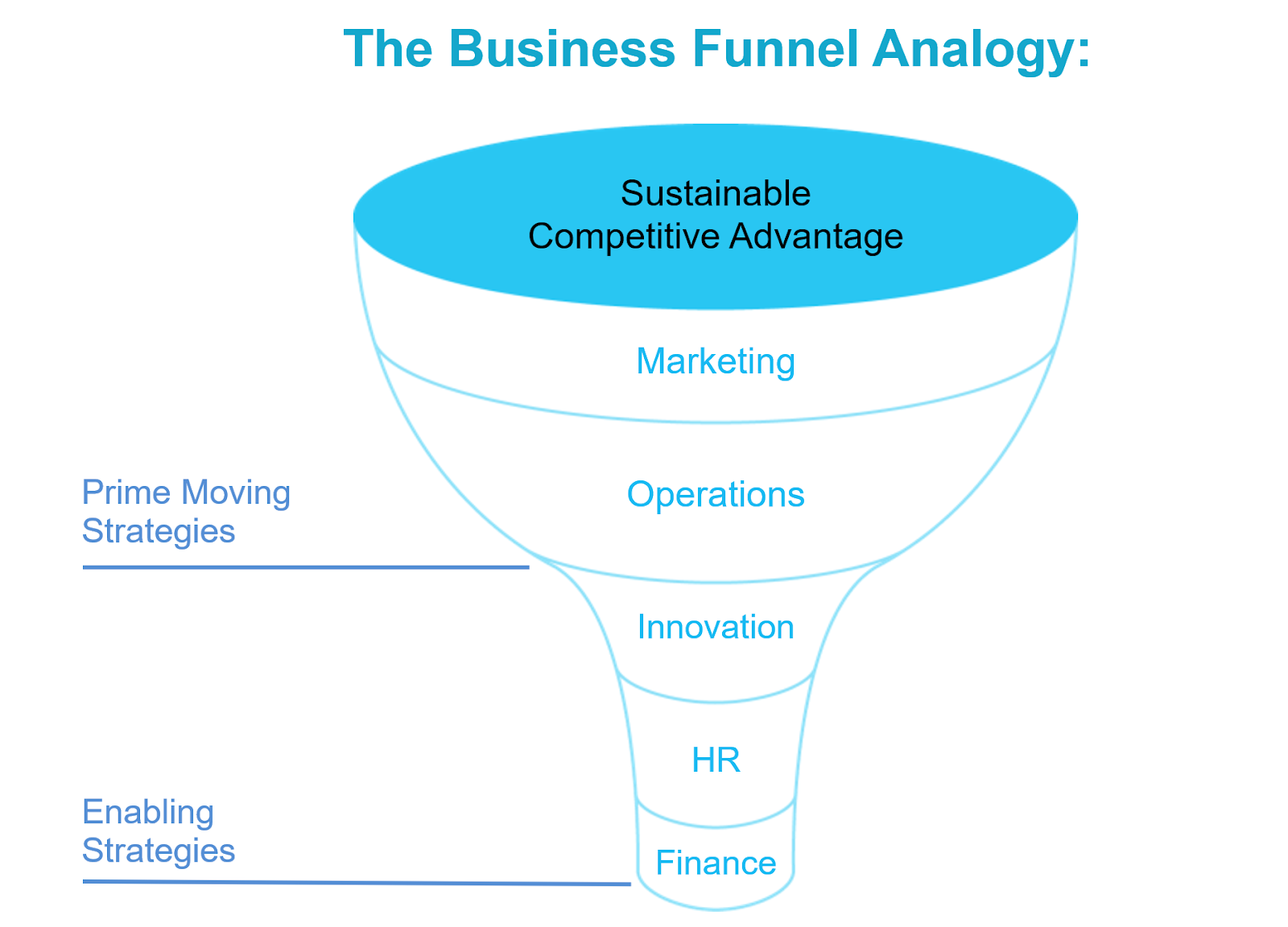What to Expect from Your Digital Strategist in 2021 and What a High Performing Digital Strategy Document Should Look Like.
Strategy. What does it even mean?
‘Strategy’ has become a loosely defined term in digital marketing. Many business owners and even some marketers believe that a strategy is simply a set of concepts and ideas. These concepts and ideas are pulled into a beautiful looking presentation, presented to a client, but very seldom implemented. Why?
The misconceptions of strategy
A strategy document needs to have a lot more than just pretty pictures and SWOT analysis. It needs to unpack the current and future client base, understand past wins and losses, clearly define measurable goals and how to win and retain ongoing business. It needs to understand the sales process and how marketing will support or enhance that process.
Over the past four years, we’ve met hundreds of frustrated business owners who were promised the world in a strategy, but delivered a treasure map. A document that does not fully understand the business, help develop goals or has no actionable points to implement in the business. This has led to a lack of faith and a lot of confusion in what a strategist actually does and what their credentials should be. A strategist should consider a lot more than just marketing. They should be looking at the broader industry, external factors and the people in the business.
Why a strategy can’t just be about marketing
If you look at a business funnel, you’ll notice that marketing is only one aspect of that funnel. There are many other parts of a business funnel that need to be reviewed in conjunction with marketing.
Source: Cashflowstory.com - Alan Miltz
A marketing strategist needs to understand all parts of the business
Although you might have a team of business advisors, consultants and strategists in these other areas of the company, it’s essential that they are all working towards common goals and that the marketing strategist fully understands how these parts of the business function. This means that the business owner will have a truly aligned team working on objectives that are set to get the most business.
Business owner goals and personal financial needs
Business goals are normally set at an overarching level through the vision, mission and core values of the organization, and during the financial forecasting and budgeting process.
Not everyone wants to build $100 million company.
It's important that the strategies formed in your marketing actually align with the needs and wants of the business owner.
Not everyone wants to work 100 hours a week or have the challenges and toil of a $100,000 payroll every month before they even break even. Yes, there are plenty of companies out there who are in hyper-growth mode, but your company may intentionally operate because you’re passionate about what you do or a medium-sized business helps you keep a good work-life balance. These types of business we call stage three or stage five (revenue between $500-$5m).
With this in mind, the marketing strategist needs to have a holistic look at everything going on in the business.
JO has developed some tips to help you determine whether your strategist is taking you down the right path.
1. They ask the right questions
Your strategist should ask questions not just about your marketing, but about your business goals and what success looks like for you. There's no point in creating a marketing plan covered in bells and whistles that the business owner doesn’t actually need to reach their goals.
2. They understand the difference between wants and needs
A strategist should help you understand the difference between your personal wants and business needs. Business needs should easily translate into SMART goals.
Specific
Measurable
Achievable
Realistic
Timely
Let's take a look at an example of a specific business need:

Specific: The business will increase its customer numbers from 50 per month to 100 per month by generating an additional 150 leads per month and converting 30% into new customers at an average sales value of $1000 per customer from the nominated geographic areas, and the customer profile is defined as (psychographics and demographics of customer).
Measurable: The CPL (cost per lead) to acquire a lead will be between the range of $30-$60 maximum. The business will pay up to $180 for its CPA (cost per acquisition) of each new customer. This will allow enough margin to correctly service (onboard) the customer correctly, and ensure the profit margin is maintained.
Achievable: The business has the resources in place to handle the increase of 50 customers per month, in terms of staff, stock or supply chain to deliver the same repeatable highly quality service, as it is presently doing with its current 50 customers per month.
Realistic: There are another 150 leads available in the market to convert 50 customers per month, and the business has a budget and the patience required for consistent marketing over the next twelve calendar months to build out the digital assets, campaigns and media budget to acquire these leads and customers. The salespeople in the business have sufficient training or the online shopping cart conversion is at a constant percentage.
Timely: The campaigns will commence by July 1st, 2019 and the first 90 days will be testing the right platform channels and campaign messaging to ensure the cost per lead of between $30-60, and if that number is achievable on an ongoing basis. The date to convert the first leads into sales is by July 31st, 2019 and the business will like to be increasing its customer numbers consistently to 100 per month (additional 50 customers) by the February 1st, 2020.
Now let's take a look at a poorly defined set of wants:
Non-Specific: The business wants to really ramp up its growth strategy and be the market leader as soon as possible. The business has a wonderful track record and knows that is time to really step it up a notch and wipe out its competition. If the business can do that, it will reinvest back into the market strategy, to buy more leads, and win more customers, and keep growing their awareness, cut through and engagement with customers.
Non-Measurable: The customer is looking to get as low cost per lead as possible, and wants to build reach, awareness, and engagement, and drive as much traffic and leads to their website as possible. Tools such as chatbots, email campaigns, and Facebook & Google Ads will be an effective approach.
Non-Achievable: The business has been a leader in its industry for some time, and wants to grow as much as possible in the shortest possible time frame. The directors want to open three new business divisions, quickly take market share in all three of them, and become the market leader within six months in all of their segments. It's an aggressive strategy but they are confident it can be done, and need a marketing team around them to take care of driving the leads so they can convert the sales.
Non-Realistic: With the three new divisions and increasing the sales in their existing two core business divisions, the customer would like to bring the group turnover up from $500k last year to $10m in the next 12 months. It is an aggressive growth plan but with the right marketing strategy they feel it is achievable, and they have everything in place to achieve these numbers.
Timely: The business wants the campaigns to go live as soon as possible to get a jump on the competition. They are willing to do what it takes to provide the marketing time without whatever is needed to get to market quickly.
So, as you can see this is not rocket science, but setting up a strategy for success before it even starts is critical. These need to be set long before you start talking about campaigns, assets, landing pages, etc.
A specific business need is something that you are willing to invest money into and take a commercial risk in order to try and achieve that goal.
Wants are ideas or concepts that you want to achieve but are not prepared to make any financial or time investment to achieve on an ongoing basis.
It’s crucial that a marketing strategist has a clear understanding of these basics. Adding a chatbot or autoresponder to a business with no SMART goals is a waste of time and money (WOTAM).

3. They have clarity on the customer sales process or lifecycle
A strategist needs to ensure that the strategy they're putting in place aligns to your sales process and the customer lifecycle you already have or are trying to create. There is no value running an aggressive radio campaign that will deliver a lot of traffic into a sales process that is not working.
Your sales process and marketing initiatives should complement each other. The strategist should fully understand your customer’s lifecycle and advise on how it can be improved to reach your business goals.
If you are unable to articulate your sales process in three steps or a maximum of six repeatable steps, you don't have a sales process and need to work on defining one.
4. They create a strategy that is commensurate to the size of the business
The strategist should work with the business owner to develop a roadmap that is suited to the amount of turnover and marketing budget that's going to be available on a sustainable basis. There's no value in putting together a marketing plan that has a budget that is far exceeding the capability of the business owner or the company's current life stage to be able to pay for that plan.
An architect will ask for a budget and blueprint before they build. An architect can build you a speccy home but that might not be what you want, need, or can afford.
There is no point in a strategist working with a business for months, only to produce a strategy that is not affordable or financially sustainable.
5. They include an evergreen roadmap in the strategy document
That strategy documentation that is developed needs to be a document that adds value to the organization or the small company for the next 12 months and beyond.
What you don't want, is a strategy that looks good, gives you a really good buzz for about 48 hours after the presentation, but then you’re left thinking "Okay well, now what do we do?" That is not a good strategy, it’s a disaster.
A strategy document, at a minimum, should contain the following:
- SMART goals. Per division or for the entire company.
- The current stage of where the business is at in its lifecycle.
- Profiles of customers. Including the psychographics and demographics of the customer, their frustrations, fears, wants and desires.
- Analysis of the business’ history and defines what is and isn’t a profitable business.
- A list of ideas and unconventional thinking.
- A list of competitors with insights to learn from.
- The sales process of successful businesses in the industry.
- Audience segmentation
- A critical analysis of the existing digital assets and messaging.
- A clearly defined digital sales funnel with all the stages of the perfect customer lifecycle mapped out, from hello to handover.
- Implementation checklist

Other valuable inclusions:
- A framework for understanding what media to buy in order to achieve the targets that the business is currently trying to tackle in that fiscal year.
- A list of features distinguished from customer benefits, so that customers are not just drowned with messages about features.
- Simplistic summaries that don’t bamboozle you.
- An understanding of geographical markets to penetrate.
- Clearly defined not-to-do lists, or things that the brand or the company does not do.
Note: You may not have the budget to build out all of the recommendations in the first phase of strategy development, but at least you then have a roadmap to work on or blueprint to work from over the next three to 12 months.
What is a roadmap?
The strategy document is a roadmap and works in the same way a shareholders' agreement works for a board of directors. If there is confusion, a lack of understanding or a disagreement on the company’s direction there are mechanisms in place to protect the company, as its own third party entity. Decisions are then made unbiased and in the best interest of the company.
A strategy needs to support business for more than just a couple of months. The strategist must have the time to spend with the business owner: looking at the market, assessing the competitors, talking to the customers, looking at the psychographics and demographics, understanding the messaging and so on.
That strategy needs to be upheld and maintained by anyone who enters the business to work on any marketing or customer service. Your strategy document should be useful. If it is done correctly it won’t sit in your top drawer collecting dust.
Other things to consider:
The marketing team you work with, may not work in your business forever. Make sure you have documentation that upskills your new marketing people.
If you change campaign managers, contractors or your marketing agency make sure you have full access to your strategy document. That document is an investment that is supposed to help our business achieve its goals. It will also ensure continuity when your new provider starts working with you.
If you need to make changes to the strategy, you're making changes to the document for the better. Avoid making alterations based on opinion or fads. Remember that each platform has its own set of features and functions, don’t apply the same rule to all platforms.
Your strategy document should be the ‘go to’ document for anyone who joins the business and is responsible for any asset production.
Request a supplementary video from your strategist talking through the document. Context and further explanation of the document are very valuable for current and future employes. Suggest video recording software like Loom or Camtasia to do this.
This video should go for no longer than five minutes, possibly a maximum of 10. It enables people who are working on the project to get context very quickly. It's a scalable model and a way of speeding up and reducing errors and confusion.
What will happen to my business if my strategist hasn’t done these things?
If the strategists that you're working with is not doing these things, what's going to happen is this:
- Your deadlines will blow out.
- You'll have excess iterations in your assets what you're iterating individually on each stage of the production line is not matching the strategy.
- Your marketing messages will be inconsistent and therefore confusing.
- You will burn money on advertising platforms
Some more helpful resources and important things to consider
- Make sure that the strategist you are working with is asking you the right questions. If they don't have a list of questions prepared, or the questions are only related to marketing, ask them why.
- View our needs analysis framework for some of the questions that they should be asking.
- Don't be blinded by the lights. I am talking about the bells and whistles (chatbot this chatbot that) or the flash looking slide decks. Think more about the tactical benefits that the strategy is going to deliver to your company, does it separate wants into specific SMART goals?
- Make sure the strategy is evergreen. It's not a document that makes you feel good for 10 minutes and then sits in the top drawer and collects dust. This is a service document to grow the business.
- Don’t let the document get lost in translation. Ask the strategist to create a simple video that gives a context of why the strategy is developed, and how it needs to be interpreted by digital marketers (production workers) who are the tradespeople who build it out.
- Does the strategist really get you thinking about your market segments in terms of where your customers could be; and how to position your brand, product or service closest to the cash that is relevant to your business strategy?
- Do they bring unconventional thinking to the table and challenge the current status quo in order to ensure the strategy helps you develop a competitive sustainable advantage?
- Does the strategist look at your pricing strategy, and why you price your products and services the way you do? Pricing interacts with your customers in every transaction.
I hope you found these insights useful. I am interested to learn if you have developed a killer strategy, and what you included to make it powerful?


.png)

